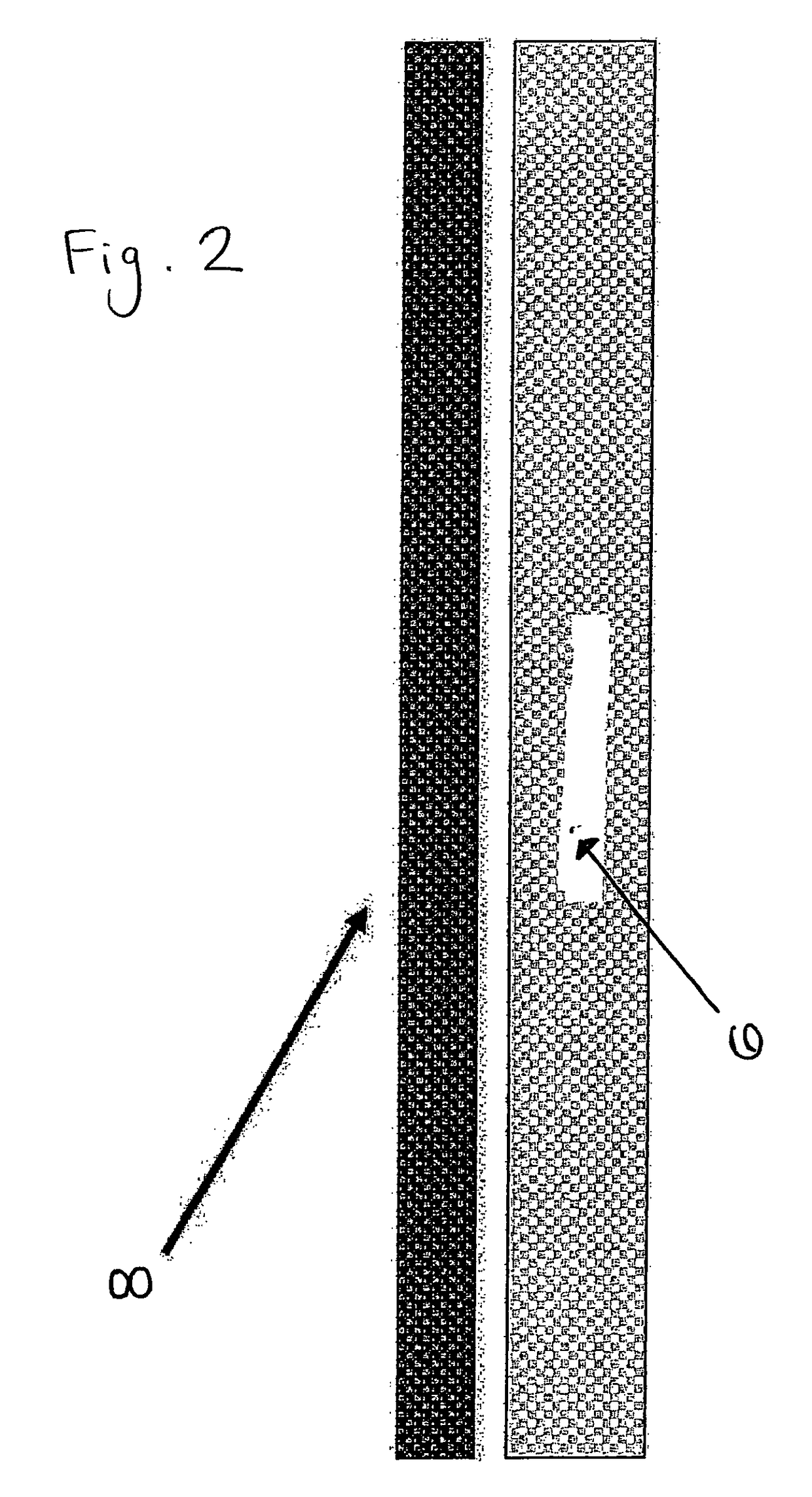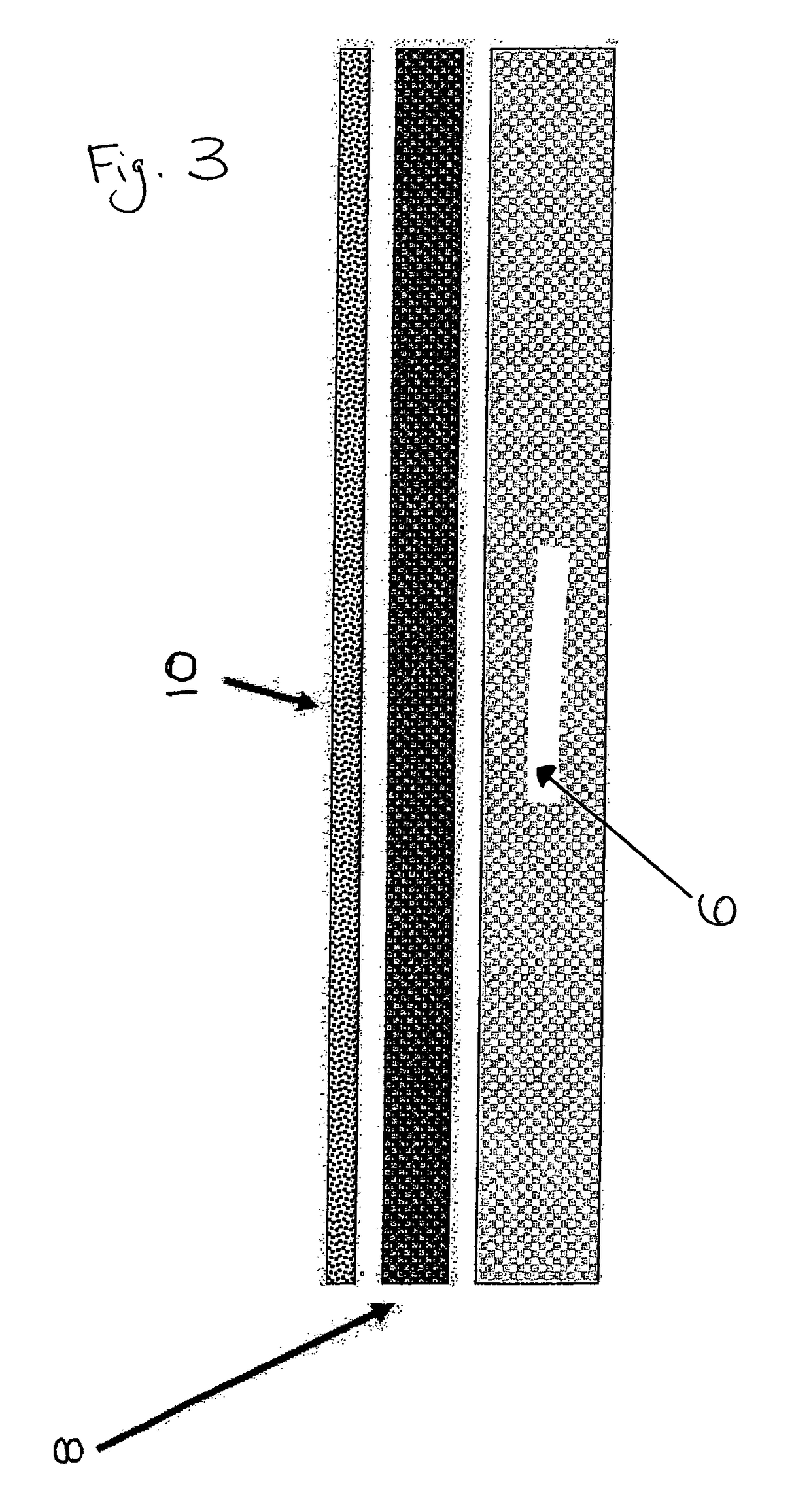Haemostatic material
a technology of haemostatic material and material, applied in the field of haemostatic material, can solve the problems causing bleeding in animals, and unsuitable for severe wounds and wounds, and achieving the effect of increasing the rate of dissolution
- Summary
- Abstract
- Description
- Claims
- Application Information
AI Technical Summary
Benefits of technology
Problems solved by technology
Method used
Image
Examples
example 1
[0108]A granular haemostat (Celox) was bonded to a 120 gsm non-woven material (75% Viscose (Danufil-2) Fibres / 25% polyolefin Fibres) made using a low melt copolyester resin with a melting range of 58-61° C. 40 gsm of resin was used, together with 60 gsm of Celox.
[0109]The Celox powder and bonding agent granules were blended together, and the combination powder then “scatter” coated onto the non-woven material in a continuous moving web. The web was carried on a heated moving belt which passed under, a second heated moving belt, the two belts applying heat and compression to the coated web to fuse the bonding agent and the Celox powder to the web.
[0110]The heat bonding process can be altered to change the degree of bonding. Heat, pressure and time (i.e. the speed of the moving belt) can all be varied as desired.
[0111]The resulting surface of the haemostatic material was rough and fluffy (see FIGS. 5 and 6).
[0112]The coated heat bonded web was then wound to form a roll. The resulting ...
example 2
[0115]A granular haemostat (Celox) was bonded to a 120 gsm non-woven material (75% Viscose (Danufil-2) Fibres / 25% polyolefin Fibres) made using a low melt copolyester resin with a melting range of 58-61° C. 40 gsm of resin was used, together with 40 gsm of Celox.
[0116]The Celox powder and bonding agent granules were blended together and the combination powder then “scatter” coated onto the non-woven material in a continuous moving web. The web was carried on a heated moving belt which passed under a second heated moving belt, the two belts applying heat and compression to the coated web to fuse the bonding agent and the Celox powder to the web.
[0117]Additionally a pressure roller was applied to smooth the surface of the granules to increase the bonding to the carrier material. The resulting material was smooth.
[0118]The coated heat bonded web was then wound up to form a roll and the resulting material was cut into 5 cm×5 cm squares, packaged and sterilised.
[0119]A hole was made in t...
example 3
[0120]A granular haemostat (Celox) was bonded to a 1 mm thick polyurethane foam using a low melt copolyester resin with a melting range of 58-61° C. 40 gsm of resin was used, together with 40 gsm of Celox.
[0121]The Celox powder and bonding agent granules were blended together and the combination powder then “scatter” coated onto the non-woven material in a continuous moving web. The web was carried on a heated moving belt which passed under a second heated moving belt, the two belts applying heat and compression to the coated web to fuse the bonding agent / Celox powder to the web.
[0122]The coated heat bonded web was then wound to form a roll and the resulting material was cut into 5 cm×5 cm squares, packaged and sterilised.
[0123]A hole was made in the femoral artery of a 100 lbs swine using a 16 gauge needle. The wound bled severely. The material was applied to the wound site with finger pressure for 3 minutes. The bleeding was robustly stopped. After 3 minutes the material was remov...
PUM
| Property | Measurement | Unit |
|---|---|---|
| temperatures | aaaaa | aaaaa |
| temperature | aaaaa | aaaaa |
| length | aaaaa | aaaaa |
Abstract
Description
Claims
Application Information
 Login to View More
Login to View More - R&D
- Intellectual Property
- Life Sciences
- Materials
- Tech Scout
- Unparalleled Data Quality
- Higher Quality Content
- 60% Fewer Hallucinations
Browse by: Latest US Patents, China's latest patents, Technical Efficacy Thesaurus, Application Domain, Technology Topic, Popular Technical Reports.
© 2025 PatSnap. All rights reserved.Legal|Privacy policy|Modern Slavery Act Transparency Statement|Sitemap|About US| Contact US: help@patsnap.com



